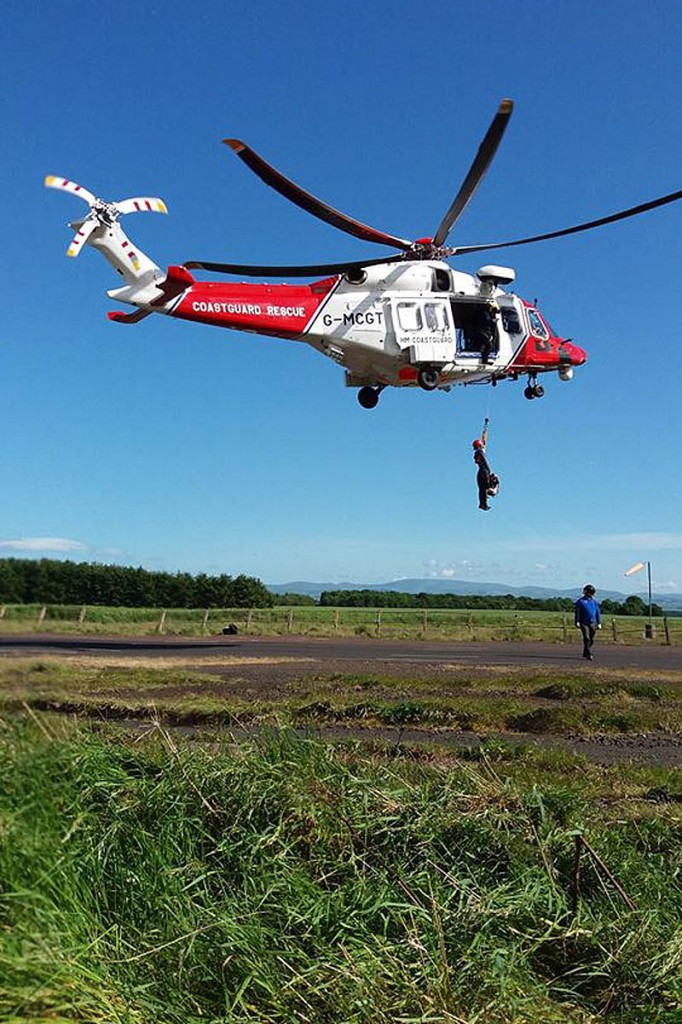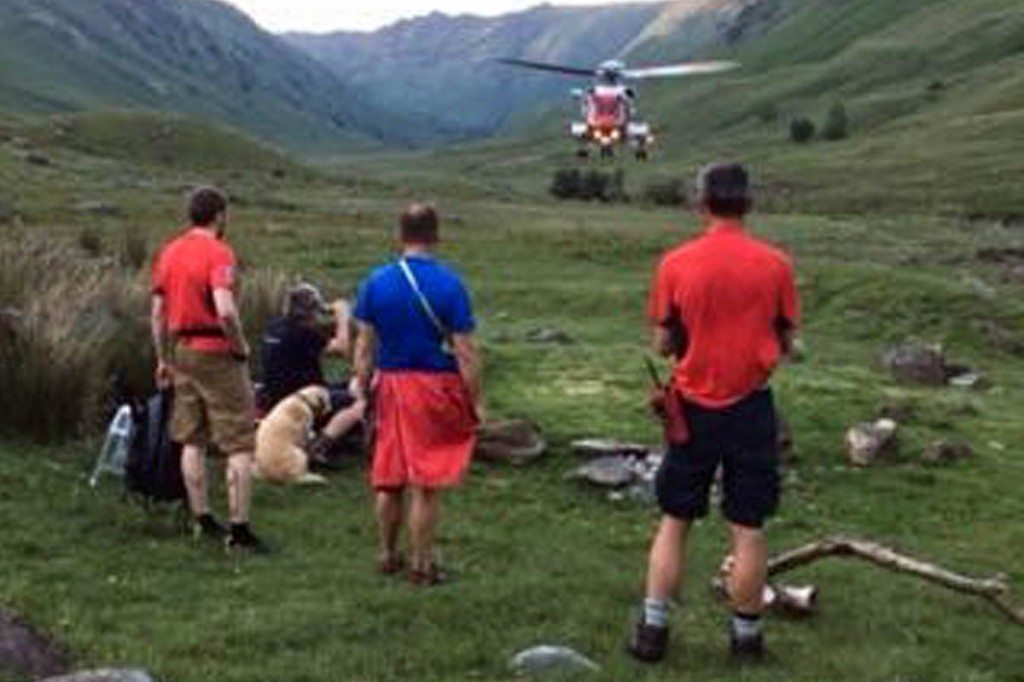Two walkers taking part in a charity event in the Cheviots were rescued after suffering heat exhaustion.
Members of Border Search and Rescue Unit were alerted by police on Saturday when the women, in their 50s, were reported to be in difficulties high on the Pennine Way.
The team was returning from Charterhall airfield where it had taken part in a training exercise with the new Coastguard AgustaWestland AW189 helicopter that will be stationed at Prestwick from next month.
Damon Rodwell of the rescue team said almost the whole team had gathered for comprehensive safety and operational briefings, followed by short flights and winching practice.
He said: “The team vehicles had only just been garaged in Kelso when a call came in from Police Scotland reporting that two walkers on a high section of the Pennine Way near Windy Gyle were suffering from exhaustion and were unable to continue.
“With most of the team still on the way home from the training exercise, it was a simple case of diverting to Cocklawfoot at the head of the remote Bowmont Valley nine miles south of Yetholm.
“In contrast to the two winter rescues earlier this year from almost exactly the same spot, the dry conditions meant that one of the team vehicles was able to make it all the way up to the Border Gate, near to where the casualties were located.”
Mr Rodwell said a group of 10 had set on that morning from Langleeford, at the foot of The Cheviot to complete a charity walk, but had made some navigational errors that resulted in their being out on the hill on one of the hottest days of the year for much longer than anticipated.
“The group was carrying just a single map, and after a disagreement they split up, with two descending on the Scottish side of the border, the two casualties and a friend hunkering down on the ridge and the remaining five continuing to their start-point on the English side,” he said.
“The casualties were found easily, having provided an accurate grid reference, and were evacuated to the Border Hotel in Yetholm where they were checked over by Scottish Ambulance Service personnel. They were suffering from dehydration and heat exhaustion and after rehydration and rest were able to return home.”
Team leader Stuart Fuller Shapcott added: “It was a pretty straightforward job for us.
“The excellent ground conditions meant we were able to get a vehicle very close to where it was needed, allowing a very simple evacuation.
“The callout demonstrates perfectly a couple of the cardinal rules of heading into the hills. Carry a map and know how to use it. Just as mountain weather can be dangerous in the winter, a long day on the hills in the height of summer can be just as risky.
“Heat-injury is a much under-estimated hazard, and can be just as lethal as hypothermia.
“The onset can be sudden and symptoms can develop faster. When heading into the hills in the summer it is essential that you carry enough water, loose light clothing, a sun-hat and sunblock.
“If the forecast – which should always be checked in advance – is for settled fine weather, it’s wise to travel light, with the essentials mentioned above plus lightweight waterproof and an extra layer as the temperature can drop suddenly once the sun goes down.
“As always, the importance of a map and the necessary navigational skills cannot be overstated.”
Keswick Mountain Rescue Team was also called out to deal with a walker suffering in the heat.
The team was alerted about 8.10pm on Monday when a 59-year-old man became semi-conscious while walking with a companion at the foot of Stake Pass in Langstrath.
A Keswick MRT spokesperson said: “The team mobilised swiftly with the first vehicle being away in three minutes. A second vehicle followed soon after, and other team members went direct.
“As the casualty was a long way from the roadhead, and the diagnosis was for possible heatstroke, they team sought air support, and an S-92 [helicopter] from Prestwick was scrambled to assist.
“Two team members ran the length of Langstrath to get to the scene, to find that some helpful passers-by had managed to get the man into the shade of their tent, and begun to rehydrate him.
“However, as he was unable to walk any distance, the helicopter continued to the scene, and airlifted him to rejoin his companion at Stonethwaite, where their transport was situated. The team then stood down and returned to base.”

